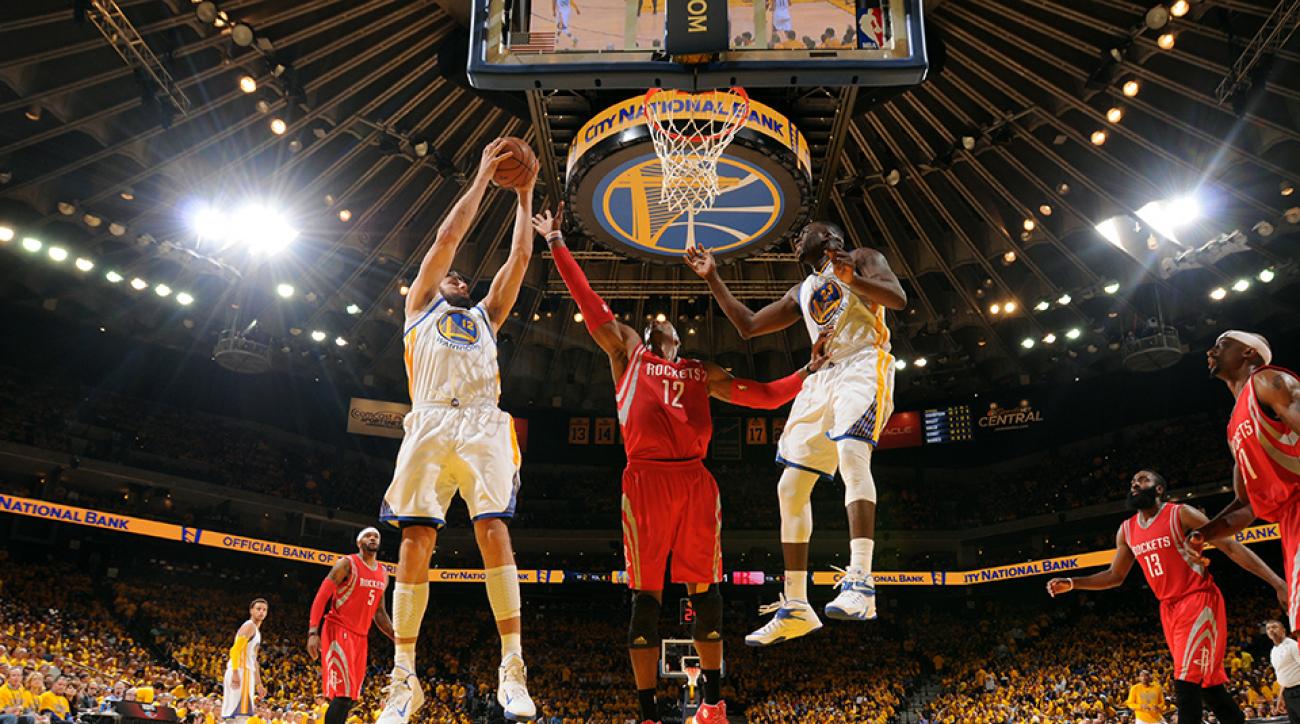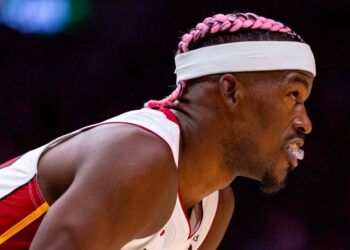Oftentimes it’s heard that someone likes something so much that “it never gets old”. But I’ve always been dubious about such claims. Everybody has favorite songs, and yet all complain about radio stations with extremely limited variety. Many vacationers lament that the trip ended. A popular word of caution, however, is that these places are “nice places to visit, but not to live in”. With this in mind, I will introduce a novel, almost heretical theory: are the Golden State Warriors, the inventors of 30 threes a game and yearly shots at 70 wins, losing their luster? Could the dazzling lights focused on Kevin Durant, Steph Curry, and company actually becoming stale?
From a financial standpoint, the answer seems unequivocally to be no. The NBA has broken its attendance record for three years in a row. The Warriors closed last year with their 230rd consecutive sellout, and have a new arena in the works that’s completely privately funded. And Forbes reports that studies completely refute the notion that competitive balance has any significant effect on league attendance. But I think there’s more to fan interest than dollars and cents. The same Forbes article quotes Blue Jays executive Andrew Zimbalist as admitting that “Under generally accepted accounting principles, I can turn a $4 million profit into a $2 million loss and get every national accounting firm to agree with me.” Money, such an important tool in the Everyman American life, becomes just a cynical accounting trick at the macro level. What really matters to the heart and soul of man is his basic state of being and outlook on life. Money, then, is just a means to these two fundamental ends. And human psychology 101 informs us that all but the brightest lights eventually go unnoticed.
One of the foundational concepts of behaviorism is habituation. The authors of a study in Neurobiology of Learning and Memory provide a rather convoluted definition. They define it as “a behavioral response decrement that results from repeated stimulation and that does not involve sensory adaptation/sensory fatigue or motor fatigue”. This sounds a bit messy, but is very easy to understand. The more one sees a commercial, the less reason is there to pay attention (unless it uses a dreaded “bad earworm” song). Weightlifters gradually need to use bigger dumbbells to get the same workout. That prized painting on one’s wall eventually gets no more notice than the white paint surrounding it. Fans, then. should be expected to lost interest when one team keeps winning, even if it’s the home team. Indeed, this is exactly what I find.
Many baseball fans bemoan that the Atlanta Braves won 14 straight division titles, but one world series. But more interesting to me is how home fans eventually stopped caring. The second year of the streak the team led the league in attendance with over three million fans a game. The final year, despite playing in a new stadium, the team finished only 10th in attendance, with 2.5 million fans. This put the Braves in a odd spot. The team kept playing well, but actually seemed to be moving backward. It was as if a sadist kept turning up the speed on the treadmill. Important to note, however, is that the team couldn’t even average one million fans before the streak started. This means that there’s something to winning ball that doesn’t lose its appeal. Uconn’s women’s basketball team, a common punching bag for being “bad for the game”, indeed averaged 2,080 fans less a game last year than in 2008, when their current run of ten straight Final Fours started. But the team is still doing far, far better than when coach Geno Auriemma first started, when other teams would-literally-run circles around the Huskies in practice. So it seems that while fans tend to become a bit jaded towards winners, a strong team has a very strong basic draw that endures year after year. And when the final piece of the puzzle, TV, comes in, it becomes a slam dunk. As common sense would indicate, great teams prove to be great draws.
While sports leagues struggled to know what to do with Television when it was first invented, TV revenue is now a monumental part of all leagues’ revenue. The NBA recently signed a $24 billion (yes, billion with a b) national broadcast contract. Fans clearly find watching the Association on TV very enjoyable: an Octagon survey found that 38% of NBA fans would prefer to stay home to watch the game, even if tickets were free. Thankfully for Golden State, even in the fourth year of the franchise’s run, fans from around the country can’t wait to tune in. Last year’s Finals, not the most competitive series, still was the highest rated since 1998. This year’s Warriors-Celtics match had ratings up 350% from Sixers-Wolves last year. Ratings are actually up across the board, indicating that the dubs may be the rising tide that lifts all boats. In TV, there’s always a new way to put a new spin or perspective on a familiar story. Skilled announcers and commentators can always point out new things to pay attention to for a dominant team. Only in the most ridiculously one-sided match-ups do talking heads authentically “run out of things to talk about”.
It’s natural to expect the dubs to lose some of their buzz if they keep winning. But there’s simply no reason to worry that the team’s success is a hindrance to league finances or viability. The whole point of watching professional sports is to inspire average Joes with incredible feats of athleticism and motivate youth athletes to train their hardest to, perhaps, someday join the ranks of the pros. Since no one complains that the NBA teams are much more talented than college squads, by the same reasoning it’s senseless to whine that one NBA team is better than others. To those few who can’t take the Dubs anymore, I would say: be careful what you wish for. It’s better to see a good show several times, then to endlessly switch between bad programming.


 NFL
NFL






